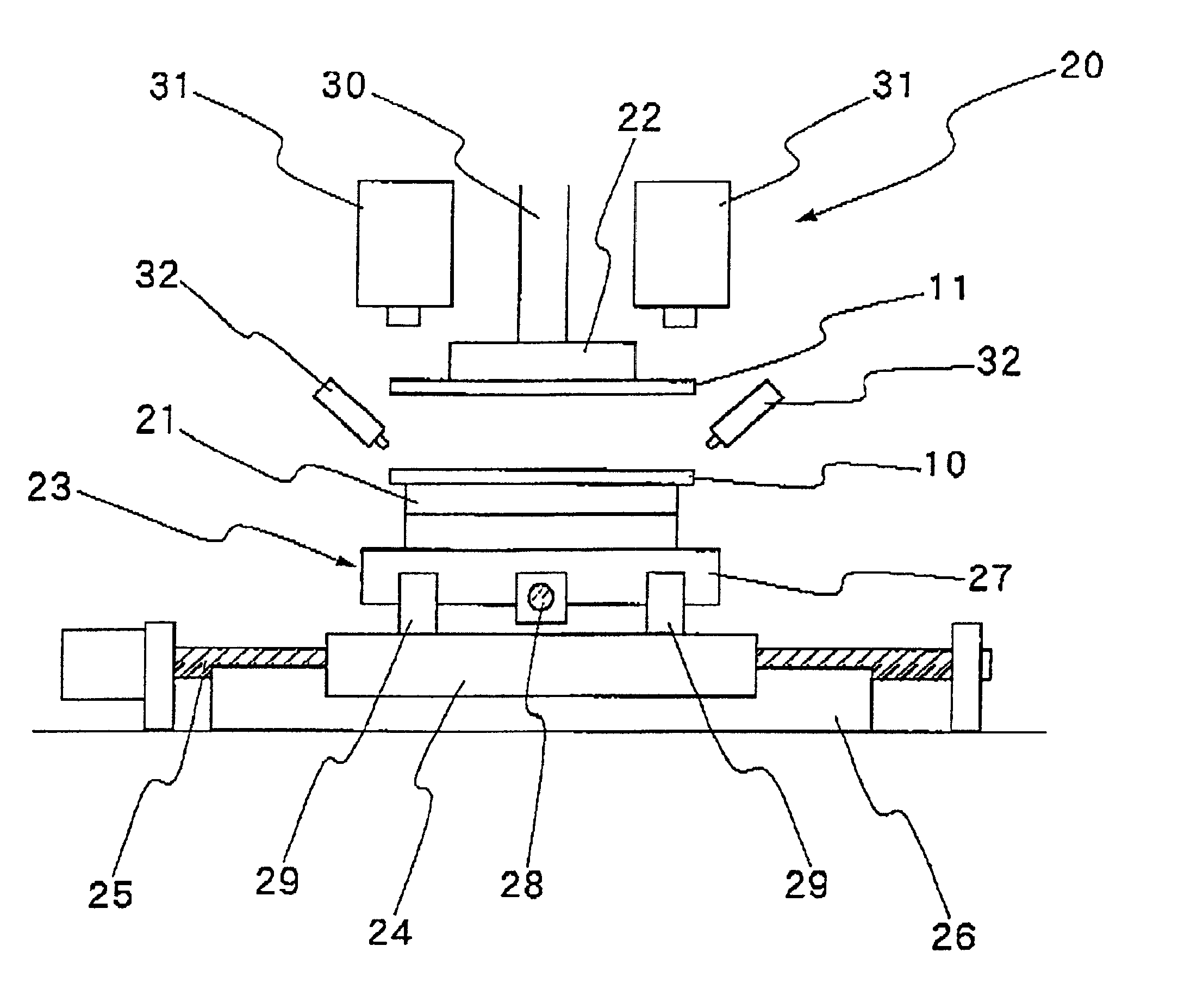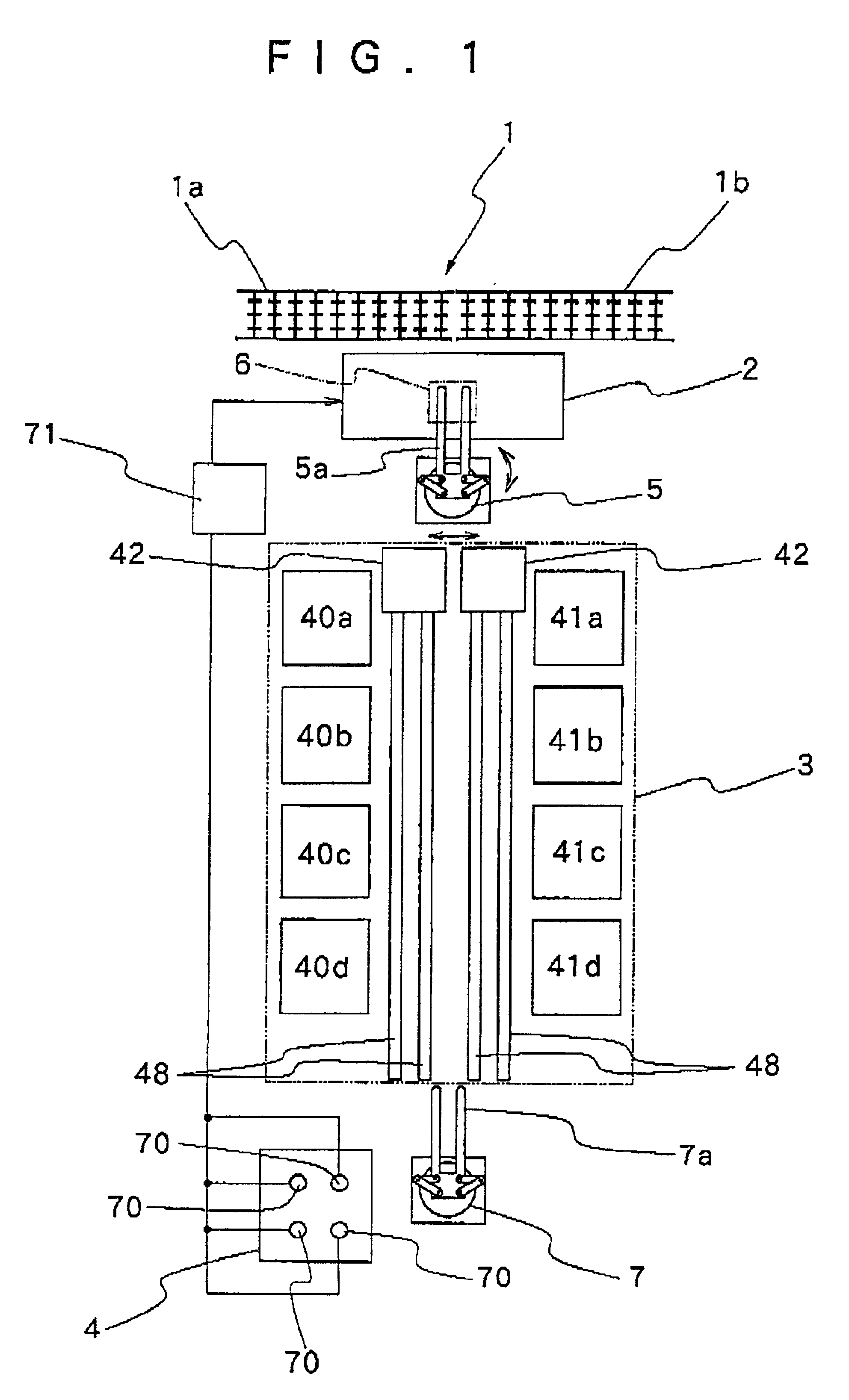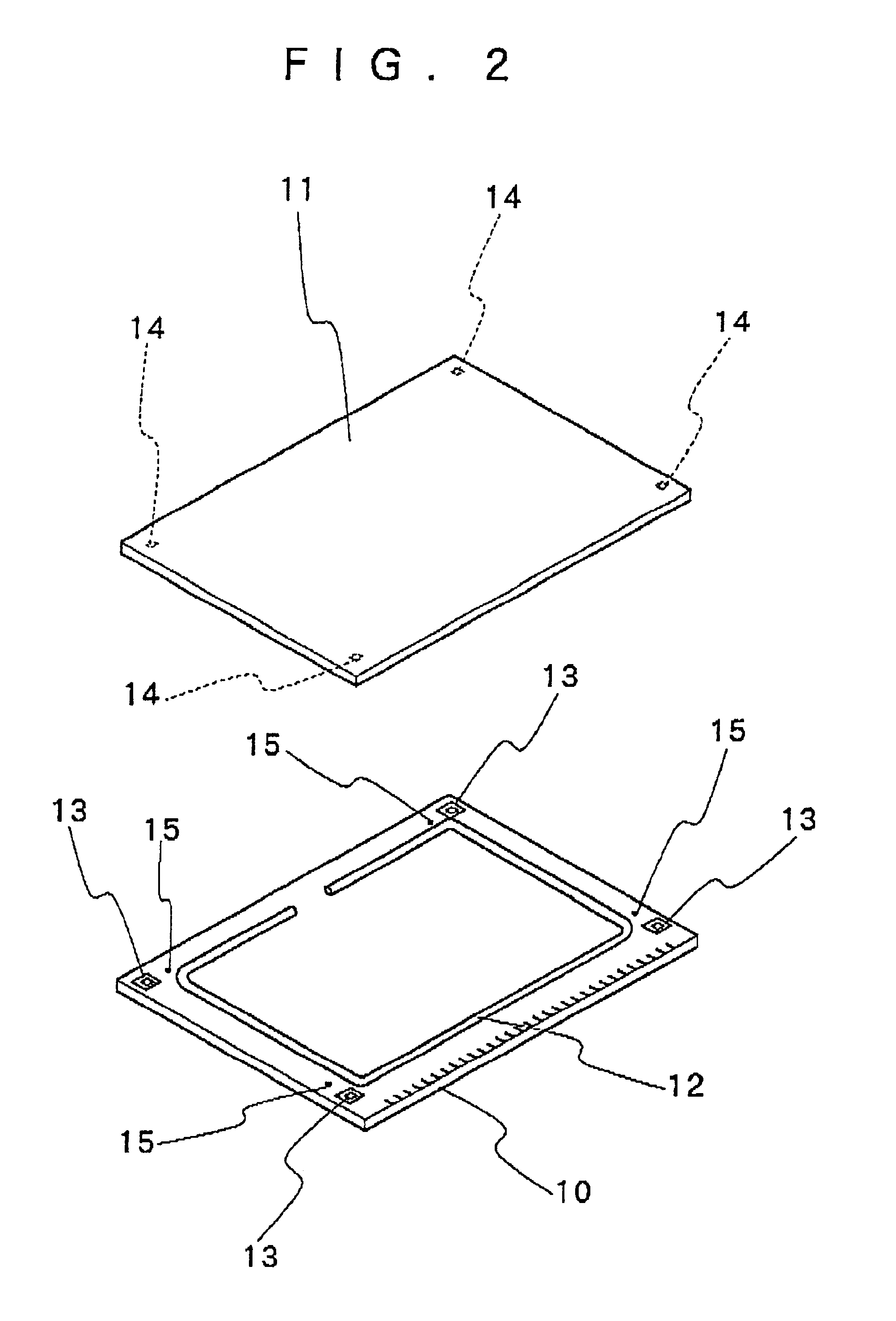Method and apparatus for bonding substrate plates together through gap-forming sealer material
a technology of sealing material and substrate plate, which is applied in the direction of manufacturing tools, instruments, other domestic objects, etc., can solve the problems of difficult to control the flexural direction, easy damage, and inability to guarantee the registered position of the bonded substrate pla
- Summary
- Abstract
- Description
- Claims
- Application Information
AI Technical Summary
Benefits of technology
Problems solved by technology
Method used
Image
Examples
Embodiment Construction
Hereafter, the present invention is described more particularly by way of its preferred embodiment with reference to the accompanying drawings. Reference is firstly had to FIG. 1 which shows general layout of a substrate bonding press according to the present invention. In this figure, indicated at 1 is a substrate conveyer, at 2 a provisional press station, at 3 a hot press station and at 4 an inspection station.
In FIG. 2, denoted at 10 and 11 are lower and upper substrates, for example, a TFT substrate and a filter substrate of an LCD panel, respectively. A sealer material 12 is applied on the lower substrate 10 before pressing. For example, the sealer material 12 is applied along marginal edges of the lower substrate plate 10 in a rectangular frame-like pattern with an open void portion at a predetermined position. After pressing and the two substrate plates 10 and 11 to adjust a gap space to a predetermined width, liquid crystal is sealed in the gap space through the open void p...
PUM
| Property | Measurement | Unit |
|---|---|---|
| width | aaaaa | aaaaa |
| transparent | aaaaa | aaaaa |
| shape | aaaaa | aaaaa |
Abstract
Description
Claims
Application Information
 Login to View More
Login to View More - R&D
- Intellectual Property
- Life Sciences
- Materials
- Tech Scout
- Unparalleled Data Quality
- Higher Quality Content
- 60% Fewer Hallucinations
Browse by: Latest US Patents, China's latest patents, Technical Efficacy Thesaurus, Application Domain, Technology Topic, Popular Technical Reports.
© 2025 PatSnap. All rights reserved.Legal|Privacy policy|Modern Slavery Act Transparency Statement|Sitemap|About US| Contact US: help@patsnap.com



